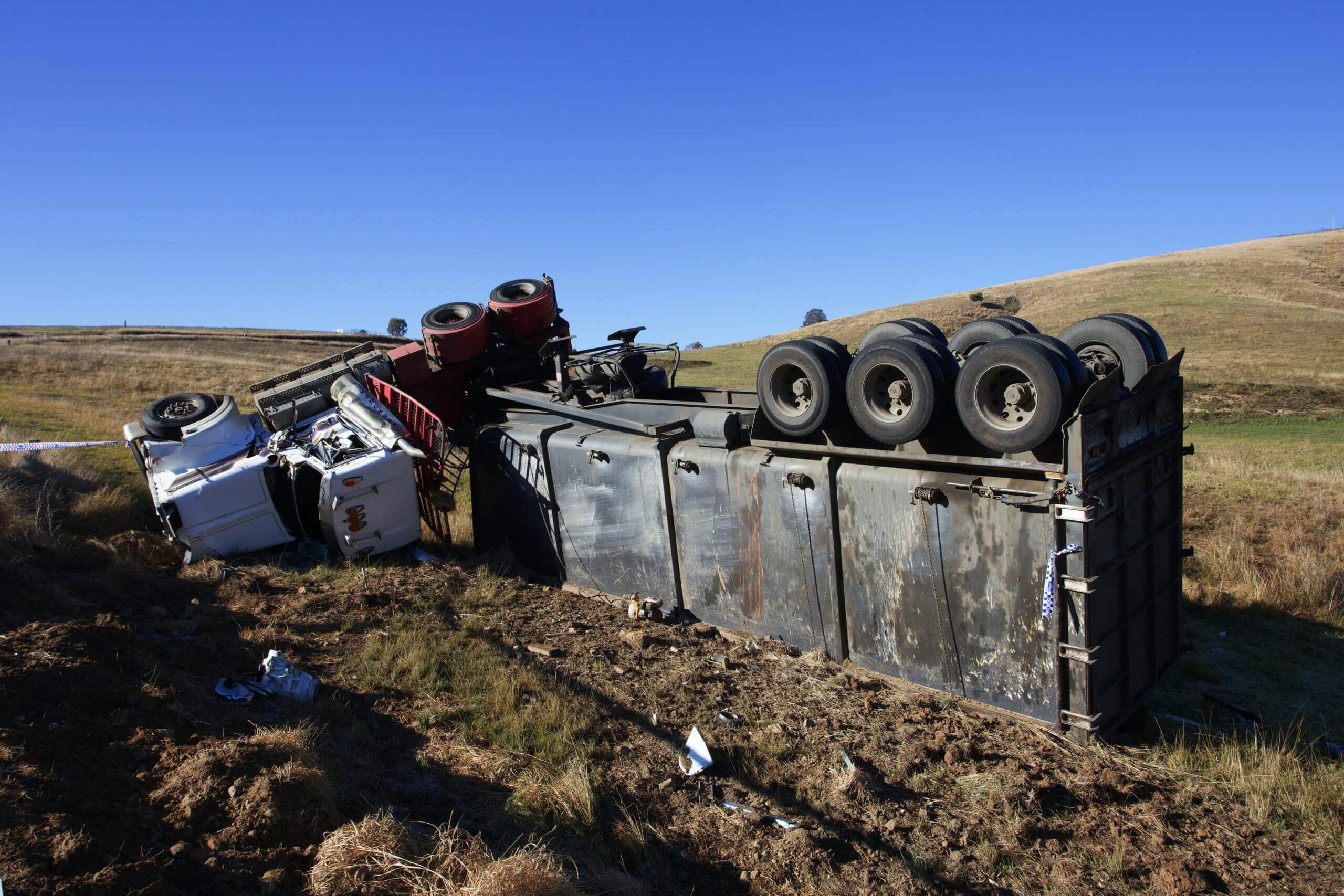
Partner at AKD Lawyers
Practice Areas: Personal Injury, Insurance Claims

Truck drivers are essential to moving goods across the country, but long hours on the road come with serious risks. Fatigue is one of the leading causes of significant truck accidents, which is why federal regulations known as Hours of Service (HOS) were created.
These rules are designed to prevent drowsy driving by limiting how long truck drivers can stay behind the wheel. In this blog, we explain how these rules work, who they apply to, and how violations can affect legal cases after a crash.
Who Must Follow Hours of Service Rules?
The Federal Motor Carrier Safety Administration (FMCSA) regulates commercial vehicle drivers’ hours of service. These laws apply to many types of vehicles and drivers, not just long-haul truckers.
If a vehicle meets any of the following conditions, the driver must follow HOS rules:
- The car weighs 10,001 pounds or more.
- It transports hazardous materials in bulk.
- It’s designed to carry nine or more passengers for pay or 16 or more without pay.
- It has a combined weight rating of over 10,001 pounds.
These rules apply differently depending on whether the truck is carrying goods or passengers. Other exceptions apply for short-distance deliveries and unusual driving conditions.
Drivers operating within a 150 air-mile radius and completing duty within 14 hours may be exempt under the short-haul exception.
FMCSA Hours of Service Rules for Property-Carrying Drivers
Property-carrying drivers are the most common on American highways. They are subject to the following regulations:
- 11-Hour Driving Limit: A driver may drive for up to eleven hours following ten hours off duty in a row.
- 14-Hour Work Window: Drivers are not allowed to drive past the fourteenth hour since starting work, even if breaks were taken during the day.
- 30-Minute Break Rule: After 8 hours of driving, a 30-minute break is required before continuing.
- 60/70-Hour Rule: Drivers may not exceed 60 hours on duty over 7 days or 70 hours over 8 days. This can reset after 34 consecutive hours off duty.
- Sleeper Berth Option: Drivers can split their 10 off-duty hours into two separate periods, provided one is at least 2 hours long, and the other is seven consecutive hours spent in the sleeper berth.
- Adverse Driving Conditions: In case of severe weather or traffic, drivers may extend driving and work limits by 2 hours.
Hours of Service Rules for Passenger-Carrying Drivers
Drivers transporting people, like bus operators, are under slightly different guidelines to protect passenger safety.
- 10-Hour Driving Limit: Drivers may drive a maximum of 10 hours after eight consecutive hours off duty.
- 15-Hour On-Duty Limit: No driving is allowed after eight hours off duty in a row, followed by 15 hours on duty.
- 60/70-Hour Weekly Limit: These drivers must also work no more than 60 or 70 hours during a 7—or 8-day period.
- Sleeper Berth Option: They must use the sleeper berth for eight continuous hours or split it into two periods (minimum 2 hours each).
- Adverse Conditions: Driving and duty limits may be extended by up to 2 hours.
Table: FMCSA Hours of Service Limits
|
Rule Type |
Property-Carrying Drivers |
Passenger-Carrying Drivers |
| Max Driving Hours | 11 hours after 10 off-duty hours | 10 hours after 8 off-duty hours |
| Max Duty Period | 14 consecutive hours | 15 consecutive hours |
| Weekly Limit | 60/70 hours over 7/8 days | 60/70 hours over 7/8 days |
| Break Requirement | 30-minute break after 8 hours of driving | No specific break requirement |
| Sleeper Berth Rule | Can split 10 off-duty hours (min 2-hour segments) | Must use berth for at least 8 hours |
| Adverse Conditions Flex | +2 hours allowed | +2 hours allowed |
| Short-Haul Exception | 150 air-miles, return within 14 hours | Same as property-carrying exception |
How Are Truck Drivers’ Hours of Service Tracked?
Today, most commercial drivers use Electronic Logging Devices (ELDs) to track their hours. These digital logs are connected to the truck and automatically record the time a driver is on duty, driving, resting, or off duty.
The following details are required in an HOS log:
- Driver’s name and carrier information
- Office address
- Start time of 24-hour log cycle.
- Duty status changes and time spent on each
- Total miles driven per day
- Shipment ID and documents
- Driver’s signature
The FMCSA mandates that most commercial drivers use electronic logging devices to track duty status, which must be available for inspection during audits or crash investigations.
In addition to ELDs, investigators may also look at:
- GPS data
- Cell phone records
- Bills of lading
- Maintenance and inspection logs
- Fuel receipts
This combined evidence helps determine whether a driver stayed within legal driving limits.
Why Are Hours of Service So Important in Legal Cases?
Fatigue-related truck accidents are a significant issue in the U.S. When a serious crash occurs, one of the first areas of investigation is whether the driver was following HOS regulations.
According to the FMCSA, Hours of Service rules are designed to ensure drivers stay alert and avoid fatigue-related crashes.
In one study, the FMCSA attributed fatigue as a factor in 13% of large truck crashes, with experts estimating the real percentage is likely higher due to underreporting.
Unfortunately, key data can be lost quickly if action isn’t taken. ELDs may automatically overwrite previous trip data, and trucks might be repaired or put back into service. That’s why it’s essential to contact a legal team soon after a crash to preserve vital evidence.
FAQs
What are truck driver hours of service rules?
The FMCSA has established federal restrictions known as truck driver hours of service rules that restrict how long a commercial truck driver may operate a vehicle while on duty. The purpose of these regulations is to increase road safety and lessen driver weariness.
How many hours can a truck driver drive each day?
A truck driver transporting property can drive for up to 11 hours after 10 consecutive hours off duty. Passenger-carrying drivers are limited to 10 hours of driving after eight off-duty hours.
What happens if a truck driver violates HOS rules?
Violating hours of service rules can result in penalties, removal from service, and liability in the event of an accident. Violations are also used as evidence in legal cases following crashes.
What is the short-haul exemption for truck drivers?
The short-haul exemption allows specific drivers to skip ELDs if they operate within a 150-air-mile radius, complete all work within 14 hours, and return to the exact reporting location each day.
Can truck accident victims access a driver’s logbook data?
Yes, but only if action is taken quickly. Trucking companies may overwrite or delete logbook data after a short time, which is why legal help should be sought immediately after an accident.
Conclusion
Truck drivers play a critical role in moving goods, but their long hours must be managed responsibly. Federal HOS rules are in place to reduce fatigue-related crashes, but they’re not always followed. If you or someone you know was injured in a truck accident and fatigue is suspected, it’s essential to act quickly.
Preserving log data and understanding the rules can make a difference in identifying faults and seeking justice. Please make an appointment for a free consultation with Alvendia, Kelly & Demarest Law Firm right now to find out how they can support your future.
Categories

In 2003, after being dissatisfied with the quality of legal care for victims of car accidents, Roderick ‘Rico’ Alvendia sought to establish a new firm focused on providing high-quality legal services to aid injured victims and their families. J. Bart Kelly, sharing Rico’s passion for upholding justice, joined the firm later that year, and established a partnership.






